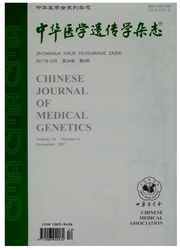

 中文摘要:
中文摘要:
目的观察奥氮平和利培酮治疗老年痴呆患者精神行为症状的疗效和安全性。方法将80例老年痴呆患者随机分为奥氮平组和利培酮组,每组各40例,共观察8周。治疗前及治疗第2、4、8周末分别用BEHAVE—AD量表评定疗效,用TESS量表评定不良反应。结果奥氮平组和利培酮组在治疗第8周末,BEHAVE—AD量所有项目评分与治疗前比较,差异均有高度统计学意义(均P〈0.01),奥氮平组治疗第2周末总分与治疗前比较,差异有高度统计学意义(P〈0.01),而利培酮组治疗第2周末与治疗前比较,差异无统计学意义(P〉0.05),两组间第8周末显效率比较,差异无统计学意义(P〉0.05);安全性方面总不良反应比较,差异无统计学意义(P〉0.05),但利培酮组锥体外系不良反应(EPS)发生率高于奥氮平组(P〈0.05)。结论奥氮平治疗老年痴呆精神行为障碍疗效与利培酮相当,但奥氮平起效快,EPS少,更适用于老年痴呆患者。
 英文摘要:
英文摘要:
Objective To observe the efficacy and safety of Olanzapine and Risperidone in the treatment of dementia pa- tients with behavioral and psychological symptoms. Methods 80 senile dementia patients were selected and divided into two groups randomly, Olanzapine group (40 cases) and Risperidone group (40 cases). Before the treatment and the treat- ment for two, four and eight weeks, the two groups were both given the BEHAVE-AD scale to evaluate the efficacy and TESS scale to evaluate the adverse reactions. Results In the treatment of the 8th week, the differences of all the BE- HAVE-AD scales compared with before the treatment in the two groups were statistically significant (P 〈 0.01). In the treatment of the 2nd week, the difference of total scales compared with before the treatment in the Olanzapine group was statistically significant (P 〈 0.01), the Risperidone group was not; but at the 8th week the difference of efficiency rate be- tween the two groups was not statistically significant. In security, the difference of total adverse reactions rate was not sta- tistically significant, but the incidence of extrapyramidal side effects (EPS) in the Risperidone group was higher than in the Olanzapine group(P 〈 0.05). Conclusion The efficacy of Olanzapine and Risperidone in the treatment of dementia patients with behavioral and psychological symptoms are equal, but Olanzapine works faster, side effects are less, so Olanzapine is more suitable to treat dementia patients with behavioral and psychological symptoms.
 同期刊论文项目
同期刊论文项目
 同项目期刊论文
同项目期刊论文
 Effect of Antipsychotic Medication Alone vs Combined With Psychosocial Intervention on Outcomes of E
Effect of Antipsychotic Medication Alone vs Combined With Psychosocial Intervention on Outcomes of E No significant association between RELN polymorphism and autism in case-control and family-based ass
No significant association between RELN polymorphism and autism in case-control and family-based ass Genetic screening for mutations in the Nrdp1 gene in Parkinson disease patients in a Chinese populat
Genetic screening for mutations in the Nrdp1 gene in Parkinson disease patients in a Chinese populat 期刊信息
期刊信息
